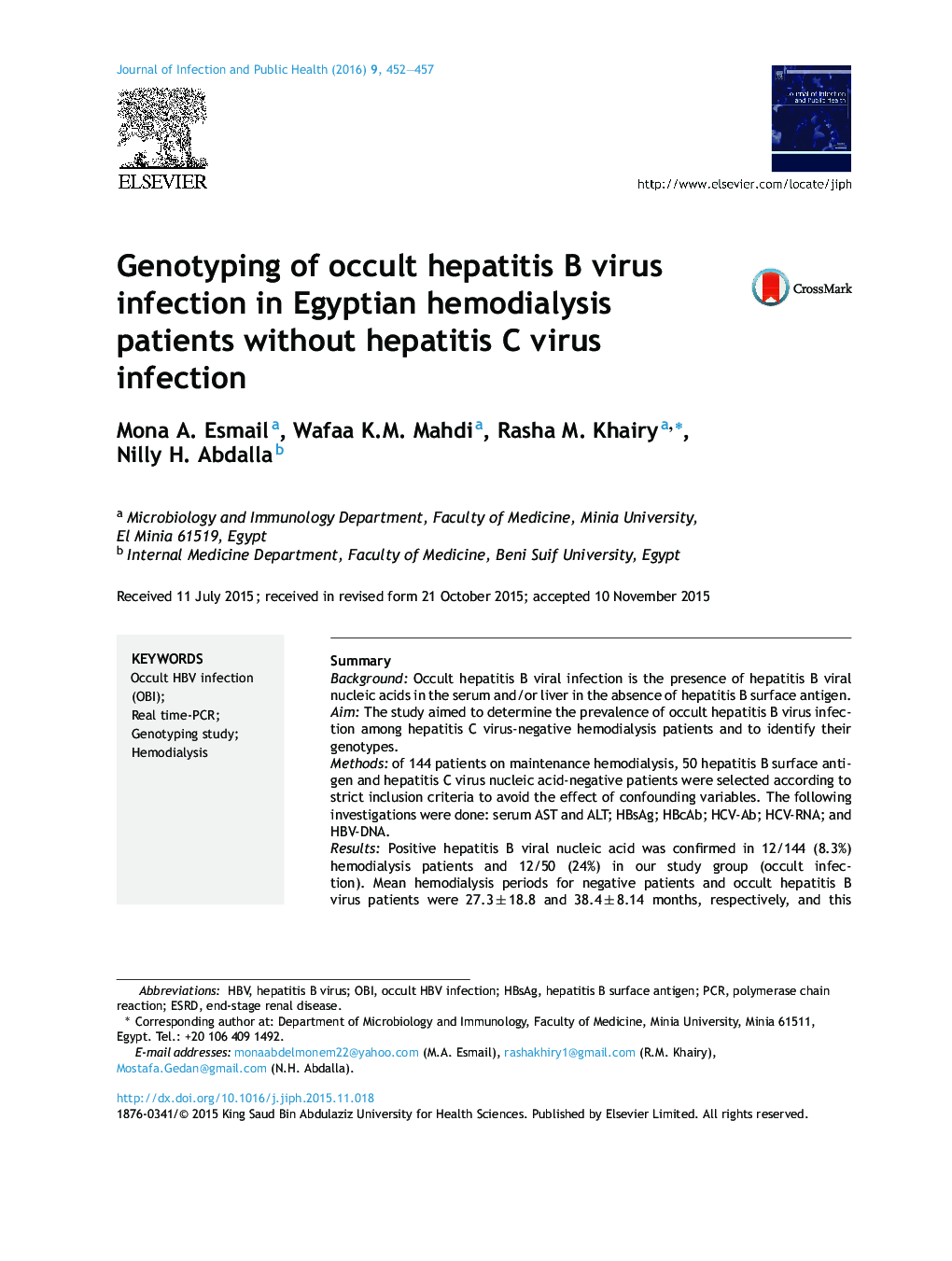| Article ID | Journal | Published Year | Pages | File Type |
|---|---|---|---|---|
| 3405901 | Journal of Infection and Public Health | 2016 | 6 Pages |
SummaryBackgroundOccult hepatitis B viral infection is the presence of hepatitis B viral nucleic acids in the serum and/or liver in the absence of hepatitis B surface antigen.AimThe study aimed to determine the prevalence of occult hepatitis B virus infection among hepatitis C virus-negative hemodialysis patients and to identify their genotypes.Methodsof 144 patients on maintenance hemodialysis, 50 hepatitis B surface antigen and hepatitis C virus nucleic acid-negative patients were selected according to strict inclusion criteria to avoid the effect of confounding variables. The following investigations were done: serum AST and ALT; HBsAg; HBcAb; HCV-Ab; HCV-RNA; and HBV-DNA.ResultsPositive hepatitis B viral nucleic acid was confirmed in 12/144 (8.3%) hemodialysis patients and 12/50 (24%) in our study group (occult infection). Mean hemodialysis periods for negative patients and occult hepatitis B virus patients were 27.3 ± 18.8 and 38.4 ± 8.14 months, respectively, and this difference was significant (p-value = 0.02). Mean alanine transaminase levels were 20.27 ± 5.5 IU/L and 25.3 ± 9.6 in negative patients and occult infection patients, respectively. This difference was non-significant. Aspartate transaminase levels were 21.4 ± 10.2 IU/L and 27.3 ± 4.6 IU/L, respectively, in negative patients and infected patients; this difference was significant (p-value = 0.03). Half (6/12) of the positive samples belonged to genotype ‘B’, 33.3% (4/12) to ‘C’, and 16.6% (2/12) to genotype ‘D’.ConclusionOBI is likely among hemodialysis patients even without HCV coinfection (24%). Genotype D cannot be the only genotype distributed in Upper Egypt, as the current study reported relatively new results that 50% of the patients with occult B carry genotype B, 33.3% carry genotype C and only 16.6% carry genotype D.
